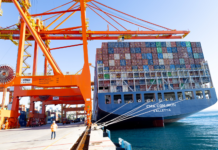
President Trump signed an executive order last week hours before the August 1st tariff deadline, that will put the administration’s reciprocal tariffs for exports from a long list of countries into effect for all goods not loaded before August 7th.
For most countries, the order raises tariffs to about the 15% to 20% level also set in most of the negotiated trade deals – including a US agreement with South Korea that Trump announced last week – so far. Some countries like Switzerland and India, however, will face tariffs at higher levels, and continue to try and negotiate.
Other trade war developments include Trump granting Mexico a 90-day extension of its August 1st deadline, after which 30% tariffs on Mexico’s exports would be introduced, as negotiations continue. While in a separate executive order, the president increased tariffs on Canada from 25% to 35% for all non-USMCA exports as US-Canada tensions have increased.
The US 30% baseline tariff for China is still set to expire August 12th, and though talks last week resulted in optimism that the sides would agree to extend the status quo for another 90 days, there has been no official announcement yet.
Finally, Trump signed a proclamation based on a Section 232 investigation into US copper imports that raised copper tariffs to 50% on August 1st, though the determination exempts refined copper from the duty. The administration’s requested Section 232 probe into semiconductors is expected to conclude in the next two weeks, and the president has also talked about implementing tariffs on pharmaceuticals through this law, though these may be farther off.
For freight markets last week’s dramatic announcements do not appear to have had much immediate impact. A few months ago, many shippers rushed to get goods loaded between the April 2nd tariff announcement and the April 9th load-by deadline. This time around there does not seem to be much last-minute rush ahead of August 7th, possibly because frontloading to beat the original July deadline and shippers tiring of tariff-driven whiplash made this window much less urgent.
For ocean freight, transpacific container rates to the West Coast were level at about US$2,300/FEU for the third straight week last week, with daily rates since August 1st actually dipping by about $100. Prices to the East Coast fell 4% to US$3,950/FEU, for the sixth consecutive week on week decrease, and have likewise continued to ease since the executive order. Transatlantic rates were level at about US$1,900/FEU.
Freightos Terminal custom port pair data likewise show sample rates to Long Beach from specific origins facing tariff increases like Vietnam and India have been about level since the 1st. One exception were prices from Indonesia, facing 19% tariffs on August 7th, which increased a moderate 8% since the announcement.
Though a 90-day tariff extension for China could lead to some transpacific ocean demand rebound, here too frontloading to date likely means that the peak for the transpacific ocean peak season this year would still remain behind us.
Asia – N. Europe container rates were stable last week at about US$3,400/FEU and have been at about this level since early July despite reports of a relatively strong peak season and ongoing congestion. Asia – Mediterranean prices fell 4% to US$3,263/FEU last week marking seven straight weeks of declines and dipping below Asia – N. Europe levels for the first time since November.
Air cargo markets, like ocean, show little sign of any last minute push to load goods before the August 7th tariff deadline. Freightos Air Index data shows rates have gone unchanged out of most regions to the US, though prices from S. Korea to N. America have increased 11% and from LATAM 7% compared to just before the executive order.
Last week’s presidential actions included an executive order that will close the US’s de minimis exemption to goods from all origins on August 29th. The de minimis exemption has been one key to the surge of B2C e-commerce goods entering the US mostly via air cargo for the past two years.
The US suspended de minimis just for China starting in May, leading to a significant drop – but not collapse – of air volumes on this lane. The majority of de minimis packages entering the US in the last two years were from China, but closing the exemption for all origins on Aug 29th could mean an additional challenge for air carriers servicing the US, and for consumers and small business importers who’ve relied on this exemption.
Written by: Judah Levine, Head of Research, Freightos Group





